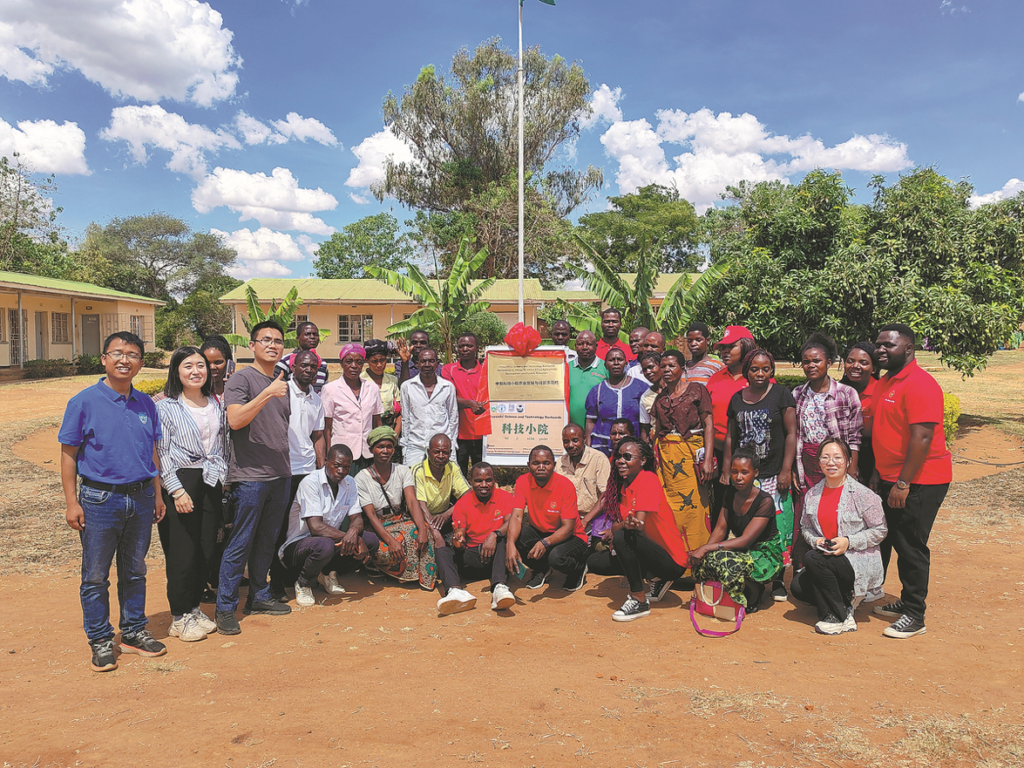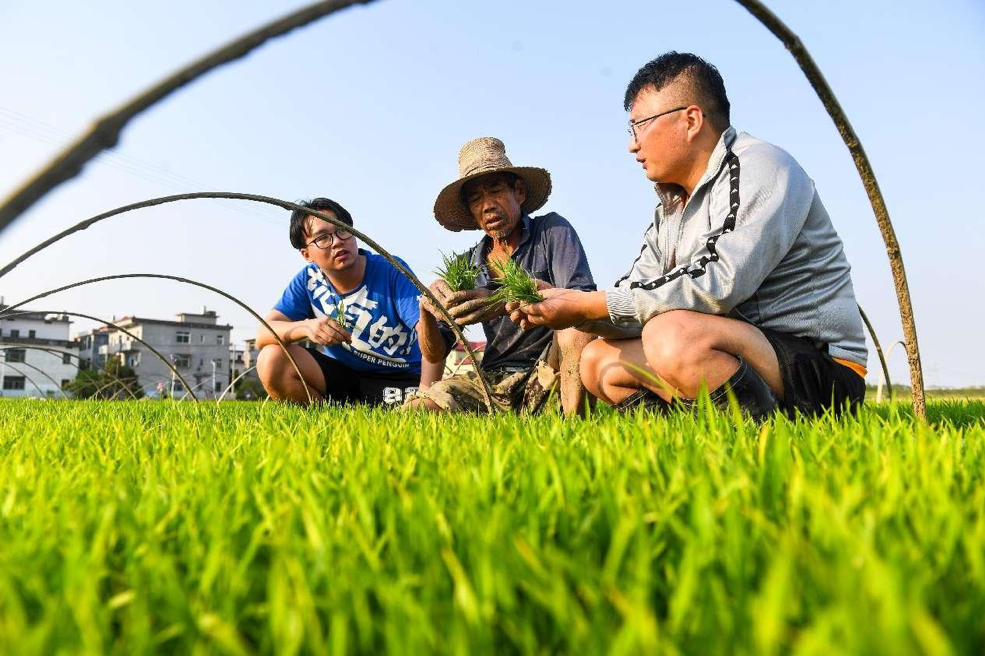By Xu Peiyu
Jujube farmer Ding Taiping in Xiawa township, Binzhou, east China’s Shandong province recently made some new friends – students of a “science and technology backyard” (STB) program that studies the cultivation of jujubes from China Agricultural University.
“I’ve been growing jujubes for many years, but this is the first time I’ve interacted with university students in the fields,” said Ding.
He said he thought it would be impossible for these students, who had never set foot in the field, to solve farmers’ problems when the STB was established in the township earlier this year.
“But after spending some time together, they’ve actually tackled some challenges that had troubled me for a long time. Particularly by combining traditional ‘local methods’ with new techniques through standardized cultivation practices, efficiency has improved significantly,” Ding told People’s Daily.
The STB is a practical and integrated talent cultivation model that China Agricultural University began exploring in 2009. It dispatches postgraduate students in agricultural majors to the field, where they, based on what they have learned theoretically, study and solve real-world problems in agricultural and rural development, with an aim to cultivate high-level agricultural talents and serve the modernization of agriculture and rural areas.
Widespread recognition
Since the first STB program was launched in 2009, this model has soon gained widespread recognition, attracting an increasing number of research institutes and universities to join in, including Northwest Agriculture and Forestry University (NAFU).
In 2021, NAFU set up a STB program for the studies of vegetable technologies in Jingyang county, Xianyang, northwest China’s Shaanxi province, which serves three counties and 17 demonstration agricultural parks in Xianyang.
Zhang Mingke, associate research fellow at NAFU and chief expert at the Jingyang STB, said the program develops and introduces new crop varieties, and studies techniques such as efficient cultivation and facility soil secondary salinization improvement and restoration.
New varieties and technologies developed by the program have been introduced to 12 counties
and districts in Shaanxi province, as well as Qinghai province and Ningxia Hui autonomous
region. They have been applied on over 1.52 million mu (around 101,333 hectares), generating
over 200 million yuan ($27.8 million) in economic benefits, Zhang told People’s Daily.
“Over the past more than a decade, the STB model has pioneered a new path of deep integration between scientists and farmers, and close collaboration between technology and industry. This has unleashed the potential of increasing farmers’ incomes, while cultivating a high-quality agricultural talent pool that is rooted in rural areas,” said Zhong Denghua, Party head of China Agricultural University.

Haikou, south China’s Hainan province. (Photo from Haikou Daily)
To date, over 1,200 STBs have been set up by 74 institutions across the country, which involve
more than 2,700 experts and 5,200 postgraduate students.
According to incomplete statistics, these STBs have introduced and made innovations on 284 green agricultural production technologies, which are applied on a total area of 566 million mu and have increased income or cut costs by over 70 billion yuan.
While emerging across China, the STBs have also been sharing their experiences with the rest of the world.
The United Nations Food and Agriculture Organization (FAO) has been promoting the STB model globally for three consecutive years from 2021 to 2023, hailing it as a typical case of assisting smallholder farmers.
Technology and marketing
Last September, FAO official Selvaraju Ramasamy visited Quzhou county in north China’s Hebei province, where China’s first STB was established. He was impressed to learn that local farmers were actually “experts” in technology and marketing and were able to earn over 2,800 yuan per mu annually.
“Remarkable! This demonstrates the value of promoting the STB model worldwide,” he exclaimed.
In 2019, China Agricultural University launched a training program to cultivate young African talents that would help improve smallholder production in Africa. Augustine Talababi Phiri, an agronomist from Malawi, joined the program.
Last November, three STBs were established in Malawi. Thanks to his knowledge learned and experience gained in China, Phiri was appointed the head of a STB in Lisasadzi, Malawi’s Kasungu District, promoting the Chinese model locally.

technology backyard in Lisasadzi, Malawi’s Kasungu District is inaugurated. (Photo provided by
China Agricultural University)
A staff member of China Agricultural University told People’s Daily that the training program has nurtured 72 agriculture-related graduate students from over 10 African countries so far.
African farmers said they welcome the STBs and hope these programs can bring practical technologies to help them grow more food.
Moreover, NAFU has taken the lead in establishing the Silkroad Agricultural Education and Research Innovation Alliance, which has been joined by 106 scientific and educational institutions and enterprises from 18 countries so far.
Zhang said the universities are responsible for the research, development, and talent support related to crop varieties, products, and technologies, while local governments organize order-based production. Chinese enterprises then demonstrate the achievements and procure the products, achieving deep integration of production, education, research, and application.
“In the next step, NAFU and China Agricultural University will cooperate with the FAO, as well as relevant countries’ agricultural departments and enterprises to establish more STBs and cultivate more young talents willing to work on the frontline of agricultural production,” Zhang said.


